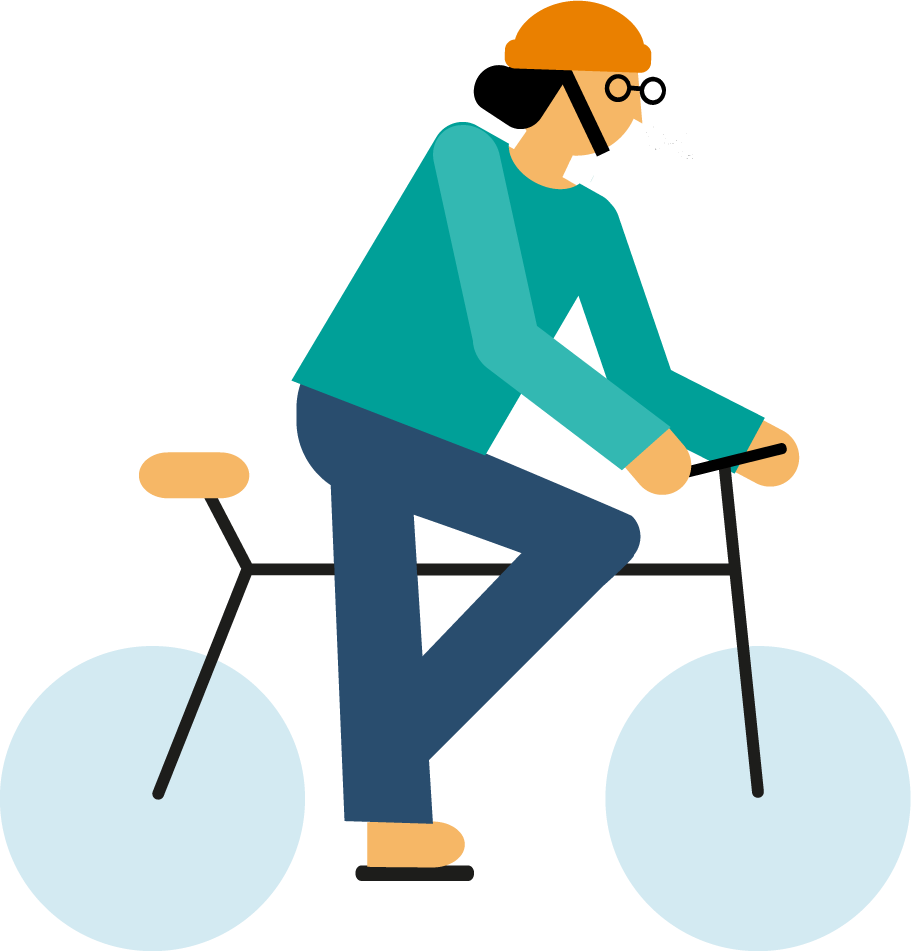Objective
The workplace makes use of opportunities for exercise, physical activity and recovery that promotes work ability in a diverse manner as part of other workplace practices.
Workplaces have many ways of promoting exercise, physical activity and recovery
Exercise and physical activity as part of workplace practices
Exercise and physical activity should be made a part of the normal daily activities of the workplace. A workplace culture that is positive towards exercise is built with actions, words and behaviour. Workplace practices are successful when the employees have the opportunity and motivation to recover during the working day using exercise and physical activity and they are encouraged to do so. It is important that the actions and words of the management and supervisors
support the promotion of exercise and physical activity at the workplace.
When promoting work ability and health, it is important to take into consideration the starting point of individual employees – exercise and physical activity should be in relation to the requirements of work and the general life situation. Occupational health care is a capable partner in this work.
Examples:
- Survey the amount and quality of physical activity in relation with the requirements of work as part of a risk assessment
- Take exercise and physical activity into account in occupational safety activities. Sitting or being otherwise still for long periods of time as well as periods of physically taxing work that cause unbalanced strain and are too long in duration both form an occupational safety risk.
- Include the promotion of exercise, physical activity and recovery in the occupational health care action plan
- Develop the ways the workplace has for supporting employees’ lifestyle changes in order to promote physical activity and recovery.
- Organize opportunities for the employees to either engage in appropriate physical activity or take breaks according to the workload: in physically demanding work enable periods of recovery during the shift and in sedentary work enable breaks including physical activity.
- Provide new employees with orientation to the workplace practices related to exercise, physical activity and recovery
- Bring up exercise and physical activity in performance appraisals as a way for strengthening well-being and work ability
Engaging in physical activity and exercise together
Groups for promoting exercise can be formed in the work community in accordance with needs and the stressfulness of work. An interest in a specific type of physical activity is also a natural starting point for forming groups and finding like-minded company. Lifestyle changes tend to be challenging, but other people in similar situations can provide encouragement to continue.
Examples:
- The workplace offers shared exercise breaks and sport groups according to the stressfulness of work
- Well-being at work days include opportunities to engage in exercise and physical activity
- There are groups or people at the workplace who encourage people to exercise
- The workplace organizes campaigns related to exercise and physical activity
- The workplace participates in national exercise campaigns
Exercise and physical activity as part of general health promotion
Exercise and physical activity should be included in workplace activities that promote work ability, such as
- weight management
- improving work ergonomics
- stress management or
- group activities focused on sleep hygiene.
Occupational health care is a great partner for planning the group activities in a way that takes the workload and health effects into account.
Exercise, physical activity and recovery in different work environments
Exercise, physical activity and recovery should also be considered in remote and hybrid work, in addition to in-person work.
Examples:
- Encourage employees to take breaks from sitting and maintaining vigilance by moving throughout the working day
- Organize virtual exercise guidance for the employees, paying special attention to strengthening and relaxing the musculoskeletal system
- Organize opportunities for the employees to change work stations and postures
- Acquire exercise equipment that the employees can use and organize premises for moving and recovering in in-person work
Exercise, physical activity and recovery as a way for promoting mental well-being
Worsening work-related stress has an adverse effect on the opportunities and resources to engage in exercise. That is why it is important that the workplace makes sure that workload during the working days remains reasonable. After a reasonable and appropriately porous working day, an employee will have resources left to engage in exercise. The opportunity to move about during the working day can also prevent the development of exhaustion symptoms and help alleviate them.
Examples:
- Monitor employee well-being and stress levels regularly using methods such as discussions, well-being at work surveys and requesting follow-up data from occupational health care
- Develop working conditions to support work ability. To help with this you can make use of a risk assessment and a workplace survey conducted by the occupational health care as well as the Mental Health Support Toolkit
- Make sure that the total workload during a working day remains reasonable and enables exercise and physical activity during leisure time

